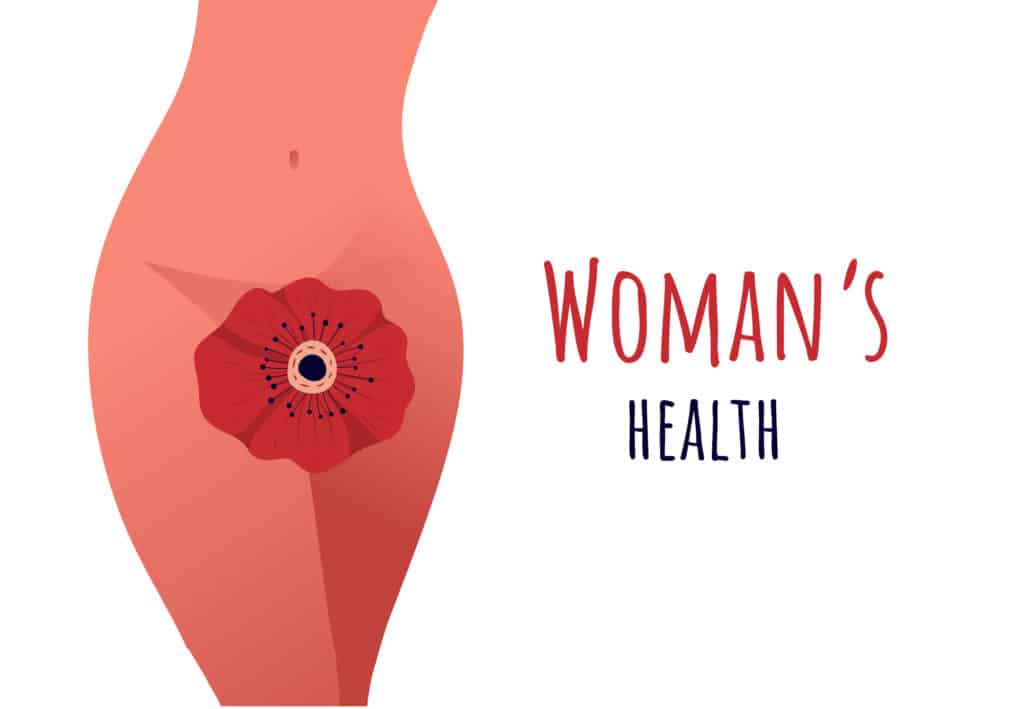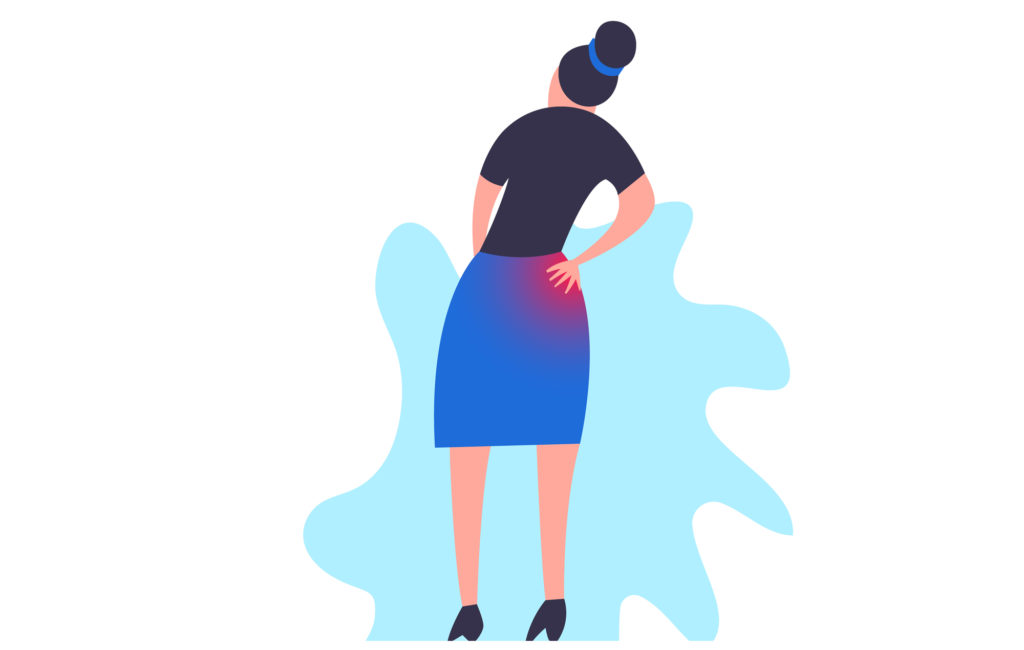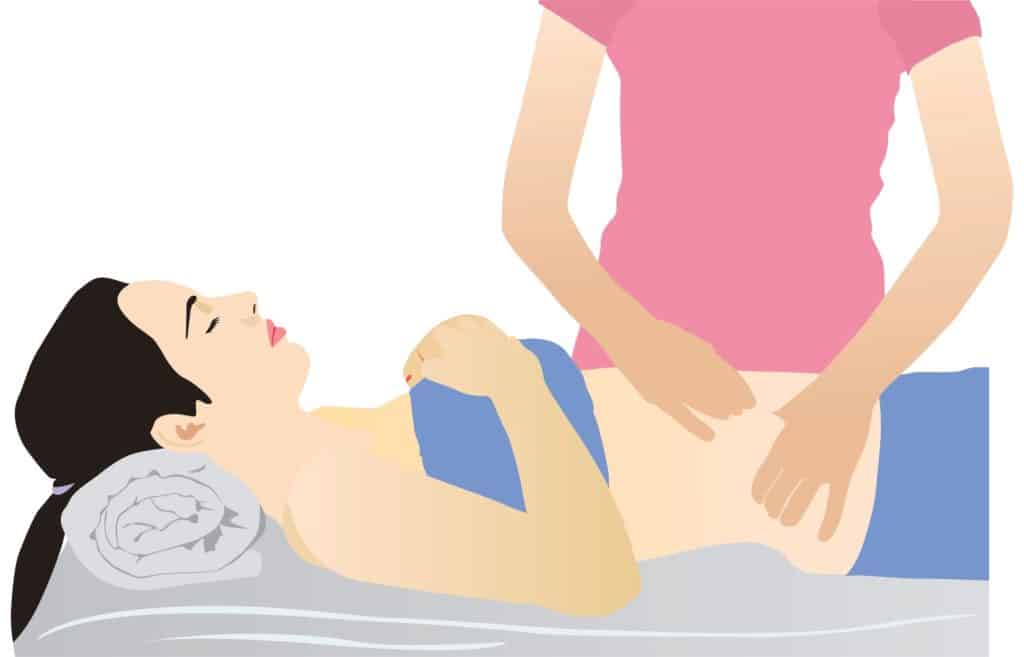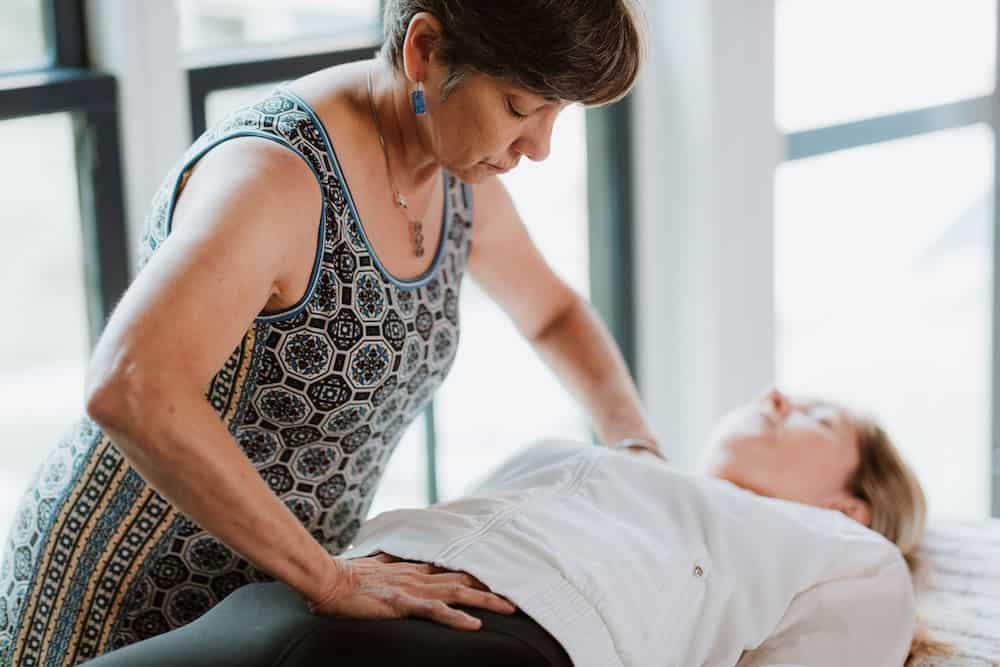
Most pregnant women suffer pain of some kind during and after pregnancy – from aching legs and pelvic pain to sore ribs, crippling heartburn, ankle pain, and everything in between.
Sometimes the cause is inflammation or hormonal changes. Other times it’s an underlying medical issue or pregnancy-related condition.
More Blogs From Nancy Branberg
How To Strengthen Your Pelvic Floor
Can Pelvic Organ Prolapse Cause Fatigue?
Is The Fear Of Covid-19 Stalling Your Path To Recovery?
Sadly, issues like hip and pelvic pain can begin during the very early stages of pregnancy for some women. Then, continue throughout the entire nine months+ of their pregnancy, and go on causing chronic pain long after the baby is born.
In this blog, we examine some of the reasons why you might still be suffering from hip and pelvic pain after giving birth.
What Causes Hip Pain (Pelvic Girdle Pain) After Pregnancy?

PPG (postpartum pelvic girdle) pain and hip pain are among the most common symptoms we see among women after pregnancy. Why? Because during pregnancy, your body undergoes various hormonal changes that make the ligaments in the pelvic girdle more elastic.
It’s all part of the female body’s incredible natural mechanism to bear children, labor, and give birth.
In some cases, however, this increase in elasticity causes additional stress on the pelvic girdle joints, which leads to inflammation and pain. In addition, as your baby grows inside your womb, muscular imbalance also occurs.
Your growing baby belly can cause the curvature in your lower back to increase, too, giving rise to tension in your upper back muscles. So, all these physical changes then manifest as sciatica, muscle spasms, nerve compression, and pain in the hip (or groin).
Another common reason for hip pain after pregnancy and pain in the pelvic region is the pressure buildup on the pelvic floor muscles. When your body prepares for childbirth, changes occur in your pelvic floor. Plus, the rise in intra-abdominal pressure is another cause of discomfort in the pelvic floor. These changes can lead to incontinence, pain in the pelvic area and vaginal pain, and hip pain.
It doesn’t matter whether you had a cesarian or standard delivery. All women are susceptible to discomfort and pain after childbirth.
As we’ve alluded to, the most common reason for postpartum hip and pelvic pain in the weeks and months following the birth of your baby is the increase in elasticity. But to provide you with a little more detail, here are some of the other reasons why you might have hip pain after pregnancy:
- Labral Tears: The labrum is the thick band of connective tissue that joins the thigh bone to the pelvic bone. You have one on each side of your body, and their main job is to allow the hips to move freely and smoothly without the bones rubbing together. They also help with stabilization and weight-bearing. Women can suffer from hip labral tears after pregnancy as a result of pregnancy weight gain, birthing positions, or pre-existing hip problems. If you have any of the following symptoms, a labral tear could be the cause of your hip pain after pregnancy:
-
- Hip or groin pain that feels deep below the surface of your skin
- A continuous dull ache around the hip or intermittent stabbing pain
- Noticeable weakness in your muscles and ability to move your hips
- Pain that worsens with activity
- Unconsciously holding your hips in an unnatural position
- Stiffness or a “catching” sensation in the hip joint
- During delivery, any damage to the abdomen (in a cesarian) or pelvic floor (in vaginal) muscles can cause hip pain and pelvic pain. In addition, any damage you suffer in childbirth can make it more challenging to bend, lift weights, use the bathroom, and impact your mobility. But we can improve these issues using a combination of gentle strengthening exercises and specialist postpartum scar massage.
- Weakness/ imbalance in muscles: Because of the hormonal changes that occur inside your body as it prepares for childbirth, you may develop an imbalance or weakness in the vagina or abdomen muscles. Your body does return to normal after delivery. Still, it doesn’t happen overnight – sometimes, it can take a little while for your muscles to return to their pre-pregnancy state. Postpartum physical therapy helps to speed this process up.
- Pubic bones separation: For your baby to pass through the vaginal canal, the pubic bones widen or separate as part of the delivery. However, when this separation is excessive, it increases bone movements and causes pain and inflammation in the pelvic region.
- Tear in the perineum: In case of an episiotomy due to vaginal delivery, doctors advise that you allow a minimum of 6 weeks for the tear to heal. Although, since every woman’s body is different and the healing process differs, it can take longer. Consequently, you may feel tenderness and discomfort in the area for more than six weeks after delivery; The deeper and more significant the incision, the more time needed to heal with possible a need for additional treatment.
- A pelvic organ prolapse: When the pelvic floor muscles become weak after childbirth, they cannot support your internal organs like the uterus, bladder, or rectum. A pelvic organ prolapse can cause a bulge in the vagina/ pelvis accompanied by pain and discomfort.
Treating Hip And Pelvic Pain After Pregnancy

So, if you have hip pain after pregnancy or pain in the pelvic area, what can you do about it?
- Breathing more deeply can help the pelvic floor and surrounding muscles relax and become less rigid. This strategy is helpful because one of the main reasons for exacerbated pain in this region can be stress and tension.Get into a comfortable position, either reclined in a chair or lying down. Place your hands on your lower rib cage with your thumbs cupping your back. Breathe into your rib cage, feeling it expand like an umbrella opening, and allow your stomach to relax.Hold until comfortable and exhale while the belly flattens itself in the process. This type of breathing should engage the pelvic floor muscles and help them relax.
- Take precautions (no, not that): After having a baby, there is a great deal of carrying from the baby itself to a stroller, changing bags, and other paraphernalia. This extra weight and energy expenditure puts pressure on the hips and pelvic floor muscles, which can cause more pain.To protect the muscles in your lower back and engage the pelvic muscles, pull your belly button towards the spine when you’re about to lift heavy objects. If you need to pick up anything, keep it close to your body – especially when picking your baby up from their stroller or crib.Get as close as you can first to reduce any strain on the lower back and pelvic region. Whenever possible, bend the knees while lifting. This bending helps to relieve pressure on the pelvic area and lower back.
- Start doing gentle strengthening exercises: Specific exercises can reduce pelvic pain and inflammation, assist delivery, and prevent future problems.
- Begin with gentle pelvic floor strengthening exercises, like Kegels, to build strength in the muscles and ligaments in the pelvic floor area to assist you during and after delivery.
- Contract your lower abdominals moving your belly button up towards your chest. If you’re not sure if you are feeling it, exhale with a sigh or like you are blowing out a candle, paying attention to the lower part of your abs.
- Strengthen the glute muscles in the buttocks by squeezing them together firmly.
- Practice these exercises every time you go to the bathroom by squeezing and holding the muscles around the vagina and stopping your urine flow intermittently.
- Use external support: In consultation with your doctor or physical therapist, you could consider using some form of external support. For example, an SI support belt can help during and after childbirth. This device supports the pelvic girdle muscles and prevents hip pain until they recover to their full pre-pregnancy condition.
- Adopt the proper posture: One of the most effective ways to reduce tension in the upper and lower back during and after childbirth and prevent hip pain is to adopt the correct posture. The shoulders and neck should be in a relaxed position – and use back support when feeding.
When standing for long periods, tighten your abdominal and glute muscles to minimize any excess curvature of the lower spinal cord.
Physical Therapy For Hip Pain After Pregnancy

Most women experience pain and discomfort in the hips, pelvic girdle, and lower back during and after pregnancy.
Unfortunately, we tend to ignore these symptoms as part of childbirth. As a result, some women endure chronic pain after pregnancy for many years/decades without any relief.
However, in most cases, physical therapy can rectify these issues. We alleviate your pain and discomfort by helping to improve your body posture and strength with therapeutic exercises, hands-on therapy, and education.
So, if you have hip pain or pelvic girdle pain, urinary stress incontinence, IBS, constipation, or a pelvic organ prolapse after pregnancy, we can help you at our specialist Women’s Health Clinic.


